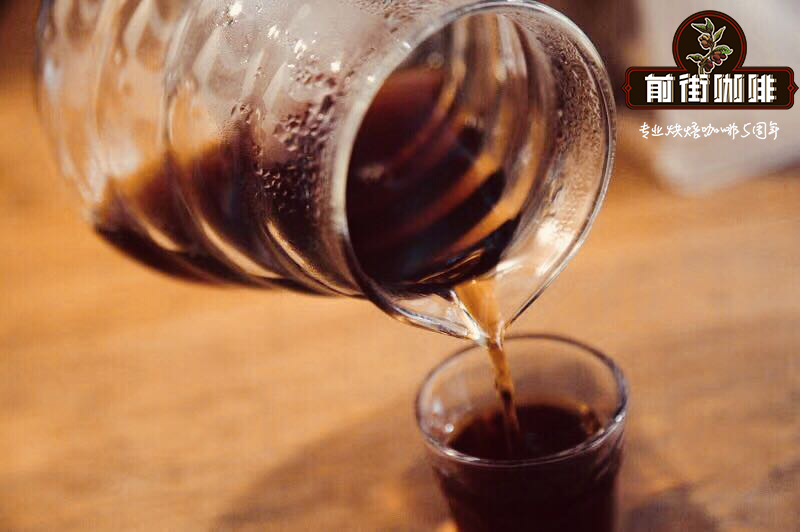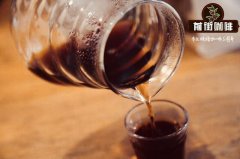What are the types of coffee beans? beginners need to know the knowledge of the three original species of coffee.

Professional coffee knowledge exchange more coffee bean information please follow the coffee workshop (Wechat official account cafe_style)
Qianjie-introduction of three major varieties of coffee
. Arabica species (Arabica)
Arabica coffee beans, which originated in the Ethiopian plateau, were originally eaten as medicine and formed the habit of baking in the 13th century. They were introduced into Europe from Arabia in the 16th century and became a favorite of Europeans. Then it followed in the footsteps of the European colonists and became one of the most popular drinks in the world. At present, Arabica accounts for about 59% of the global coffee bean production, which can be said to be the most popular coffee bean species in the world.
Arabica coffee beans have a mild taste, high sour taste and aroma, fruity and nutty finish, less sour taste, and low caffeine, so they are the most suitable for direct drinking of all coffee varieties, so most do not need to be mixed with other coffee beans to make coffee.
The only drawback is that because this bean species does not have much resistance to leaf rust, the greatest enemy of coffee trees, it can only be planted on the plateau, and its adaptability to the environment is relatively low, so the farming cost and market price are also relatively high.
The main countries that produce Arabica coffee beans are Brazil, Colombia, Kenya, Ethiopia and so on.
In terms of appearance, Arabica beans are flat and oval.
Robusta species (Robusta)
Robusta coffee beans originated in Africa and Congo, accounting for about 20% of the world's coffee bean production. This kind of bean has great resistance to leaf rust, strong adaptability, and can be cultivated in low land, so its farming cost is not too high, but because the smell is too strong, few people drink it directly. However, it is most suitable for industrial mass production, so it is widely used to make cheaper coffee products such as instant coffee.
However, the smell of this bean is so strong that when a cup of coffee is mixed with 3-4% robusta beans, the whole cup of coffee is robusta coffee. Some people think it's fragrance, but most people can't stand it, or even think it's musty, and Robusta's bitterness is hard to understand, so it's not sour enough, so it's usually mixed with other coffee beans to make coffee.
Robusta coffee beans contain almost twice as much caffeine as Arabica, and people who need to pay attention to caffeine intake should be careful not to consume too much caffeine. Robusta beans look more round than Arabica beans. Robusta species is also known as "industrial coffee", because only a few Robusta coffee beans, can brew a lot of coffee liquid, can effectively save costs.
Robusta species are grown in large quantities in Vietnam, and most of these beans are sold to large canned coffee factories. At present, Robusta accounts for about 41% of the coffee beans in circulation worldwide.
Liberian species (Liberica)
Liberian coffee beans originated in West Africa and account for only a very small amount of coffee bean production in the world. This kind of coffee bean can be cultivated in lowland, has high adaptability and disease tolerance to the environment, but can not resist leaf rust, and its flavor is not as good as that of Arabica. The coffee produced is not very popular in the market because of its poor flavor and bitter taste. It is difficult to find traces of Liberian species in the international market only in domestic circulation in West African countries, including Libya and C ô te d'Ivoire. Liberian coffee beans have a fusiform appearance and large fruits, which can be more than twice the size of Arabica beans.
Liberian coffee is now more likely to be found only in the places of production (Central Africa, Indonesia and Southeast Asia) and Europe, and it is said that the origin of Malaysian white coffee is the use of Liberian coffee to have that special flavor. Now many Liberian bean farms have switched to other hybrid coffee beans with better harvests, so if you have a chance to see Liberian beans / coffee on sale, give it a try.
Knowledge: coffee production areas in the world are mainly distributed in the south and north of the equator, also known as the "coffee belt"
In short: Qianjie is a coffee research hall, happy to share the knowledge about coffee with you, we share unreservedly just to make more friends fall in love with coffee, and there will be three low-discount coffee activities every month. The reason is that Qianjie wants to make more friends drink the best coffee at the lowest price, which has been Qianjie's tenet for 6 years!
END
Important Notice :
前街咖啡 FrontStreet Coffee has moved to new addredd:
FrontStreet Coffee Address: 315,Donghua East Road,GuangZhou
Tel:020 38364473
- Prev

Introduction of common coffee beans introduction to one of the oldest varieties of Arabica coffee beans
Professional coffee knowledge exchange more coffee bean information please follow the coffee workshop (Wechat official account cafe_style) Qianjie-Arabica variety introduction. The origin of the Arabica species (Arabica) is the Abyssinia Plateau of Ethiopia (present-day Ethiopian plateau). In the early days, it was mainly eaten as medicine, and the habit of baking and drinking was developed in the 13th century.
- Next

Coffee bean varieties and differences Introduction to the characteristics of the three native species of coffee See this simple and easy to understand
Professional coffee knowledge exchange More coffee bean information Please pay attention to coffee workshop (Weixin Official Accounts cafe_style) Front Street-Introduction of three major coffee varieties 1. Arabica Arabica beans, world-famous Blue Mountain coffee, mocha coffee, etc., almost all Arabica varieties. Appearance: small bean shape, long oval shape on the front, narrow and tortuous crack in the middle, circular arc shape on the back of bean
Related
- Beginners will see the "Coffee pull flower" guide!
- What is the difference between ice blog purified milk and ordinary milk coffee?
- Why is the Philippines the largest producer of crops in Liberia?
- For coffee extraction, should the fine powder be retained?
- How does extracted espresso fill pressed powder? How much strength does it take to press the powder?
- How to make jasmine cold extract coffee? Is the jasmine + latte good?
- Will this little toy really make the coffee taste better? How does Lily Drip affect coffee extraction?
- Will the action of slapping the filter cup also affect coffee extraction?
- What's the difference between powder-to-water ratio and powder-to-liquid ratio?
- What is the Ethiopian local species? What does it have to do with Heirloom native species?

